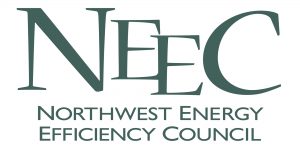Washington, D.C.-Energy efficiency measures are thriving in state capitals around the United States, with several states—including Mississippi, Connecticut, Illinois, and West Virginia—taking major steps that moved them up the ranks in the seventh annual edition of the State Energy Efficiency Scorecard released by ACEEE. For the first time in the history of the State Scorecard, the 2013 ranking of the states is being released with the participation of a U.S. Department of Energy secretary, Dr. Ernest Moniz, along with a top elected official of a state, Massachusetts Governor Deval Patrick.
Available online at http://aceee.org/state-policy/scorecard, the State Scorecard shows that the top 10 states for energy efficiency are: Massachusetts, California, New York, Oregon, Connecticut, Rhode Island, Vermont, Washington, Maryland, and Illinois. Massachusetts retains the top spot for the third year in a row based on its continued commitment to energy efficiency under its Green Communities Act. In California, requirements for reductions in greenhouse gas (GHG) emissions have led it to identify several strategies for smart growth, keeping the state in a top position at #2. Connecticut is also closing the gap due to passage of a major energy bill in 2013, and Illinois is making its first appearance in the top 10 this year, reaping the benefits of increased energy savings called for in the state’s energy efficiency resource standard.
In the seventh edition of the State Scorecard, ACEEE ranks states on their energy efficiency policy and program efforts, and provides recommendations for ways that states can improve their energy efficiency performance in a variety of policy areas. The State Scorecard report serves as a benchmark for state efforts on energy efficiency policies and programs each year, encouraging states to strengthen their efficiency commitments as a pragmatic and effective strategy for promoting economic growth, securing environmental benefits, and increasing their communities’ resilience in the face of uncertain energy costs and supplies.
NEEC Note: Washington State may have scored better in this report if the authors had considered energy efficiency spending from sources other than utilities. For example, Washington’s continued commitment to providing energy efficiency grants for schools and public buildings does not appear to have been evaluated in this ranking.
